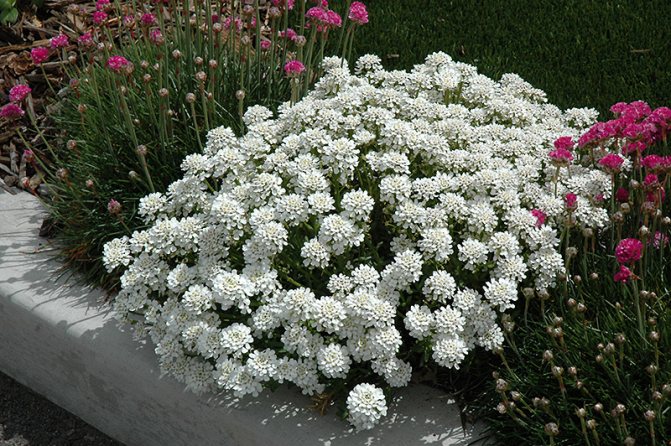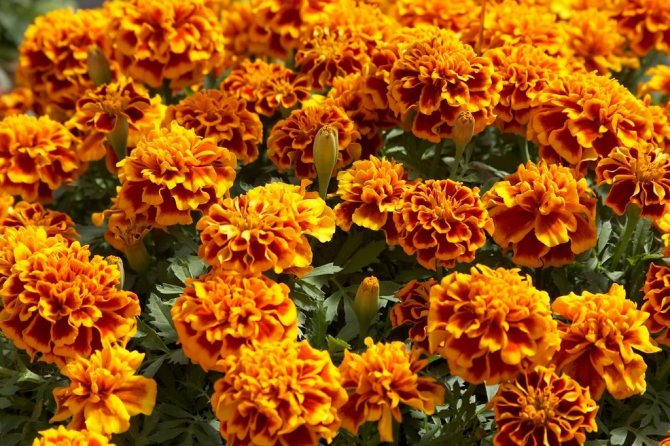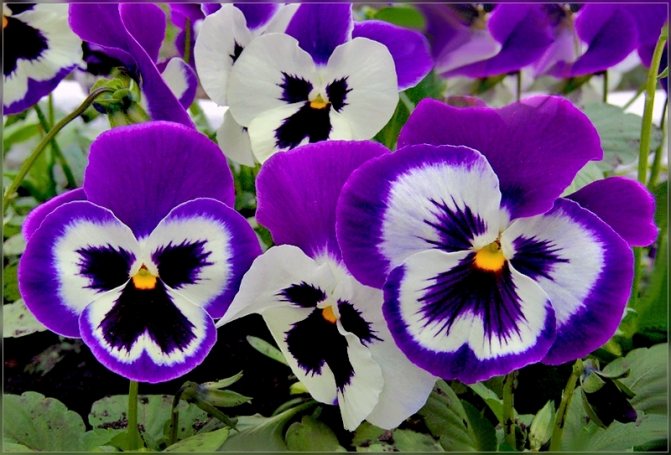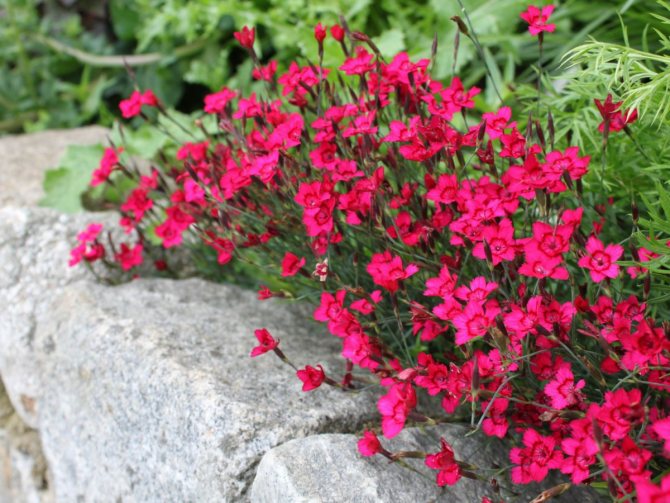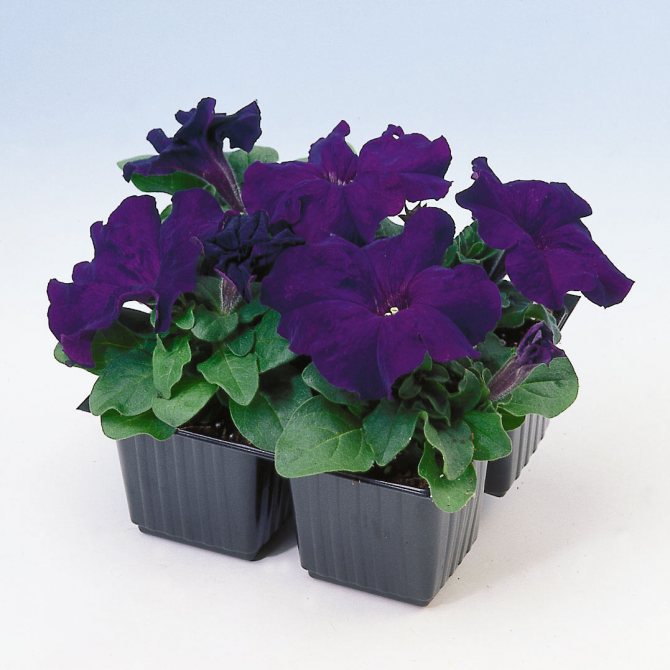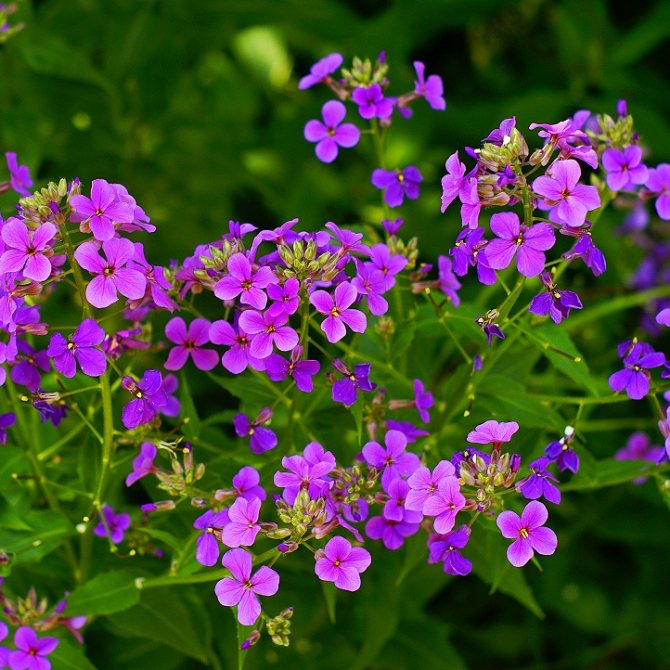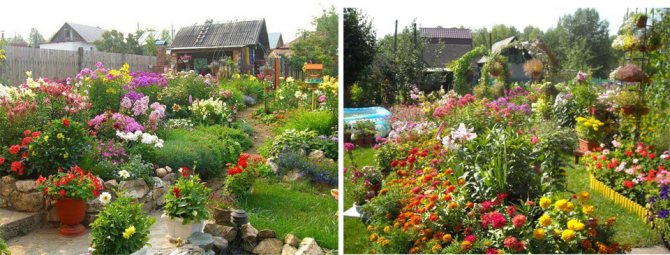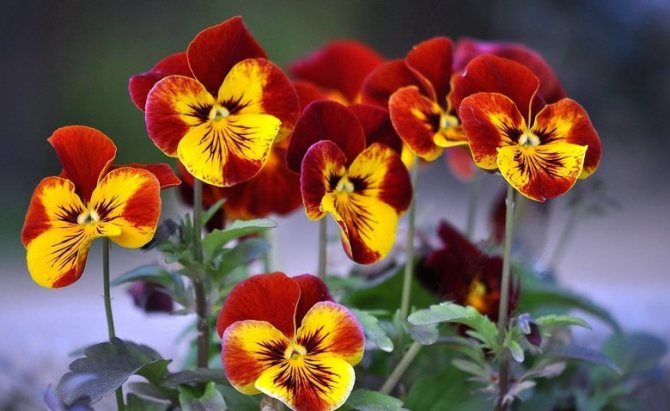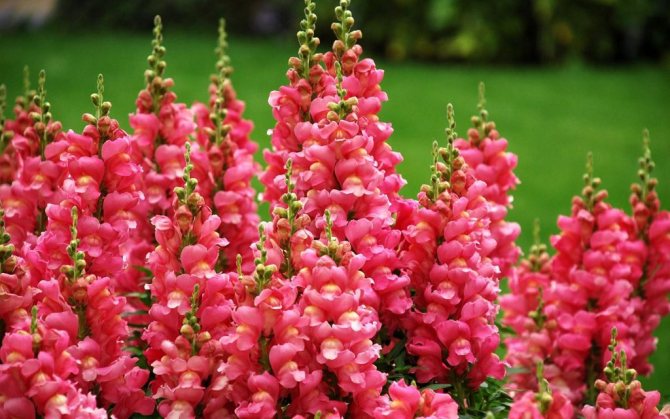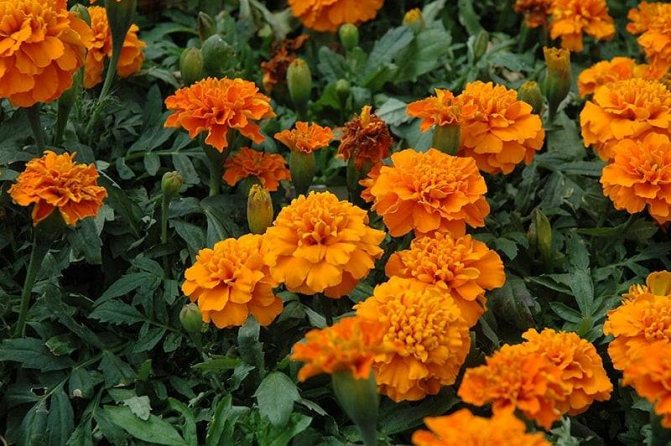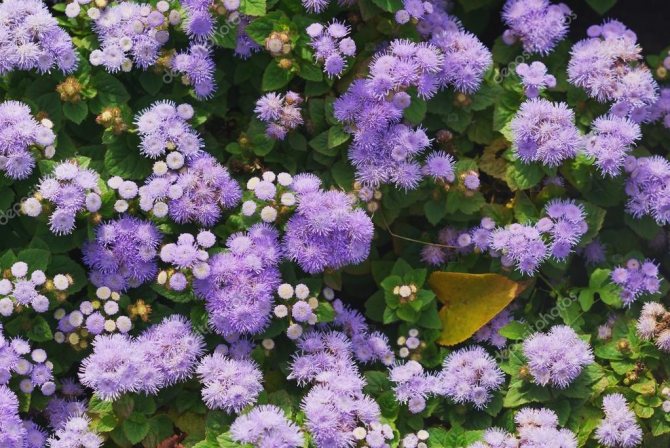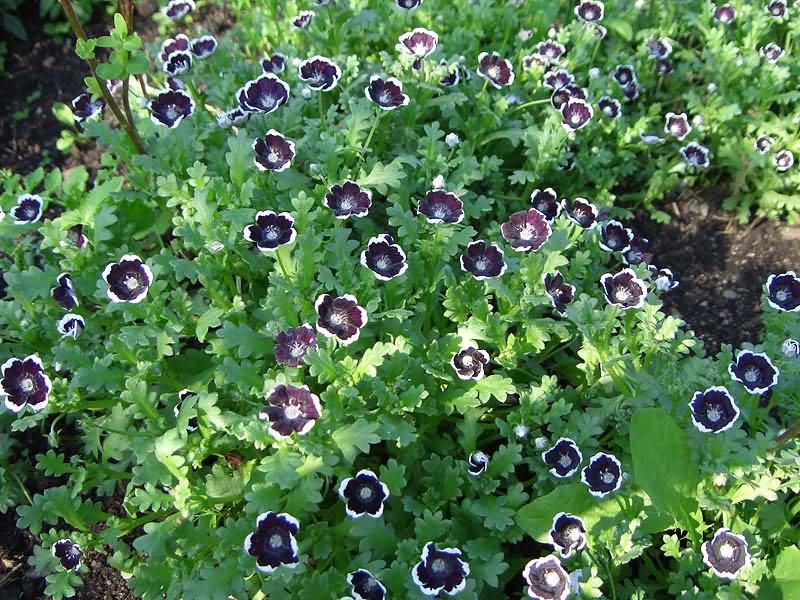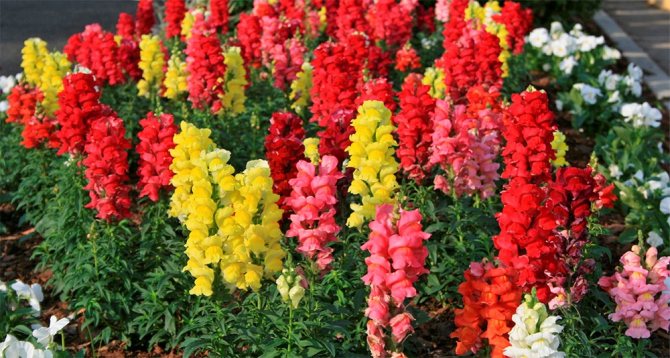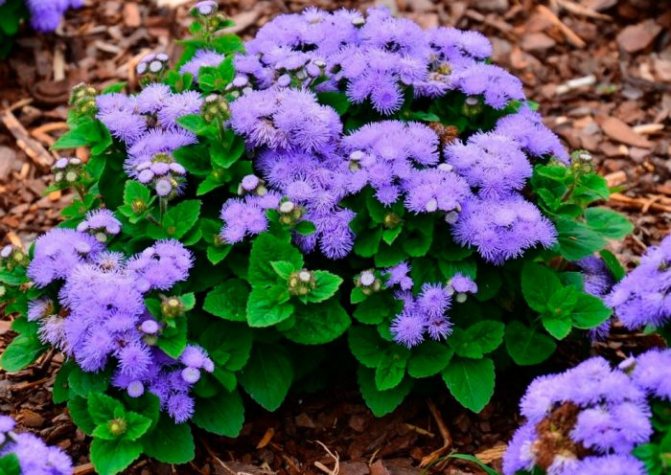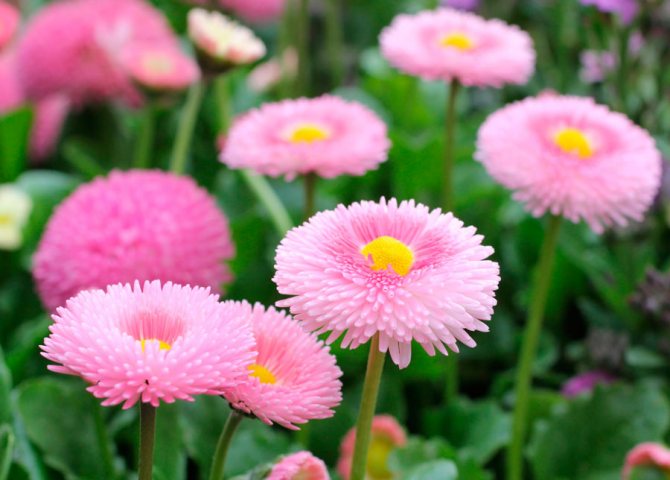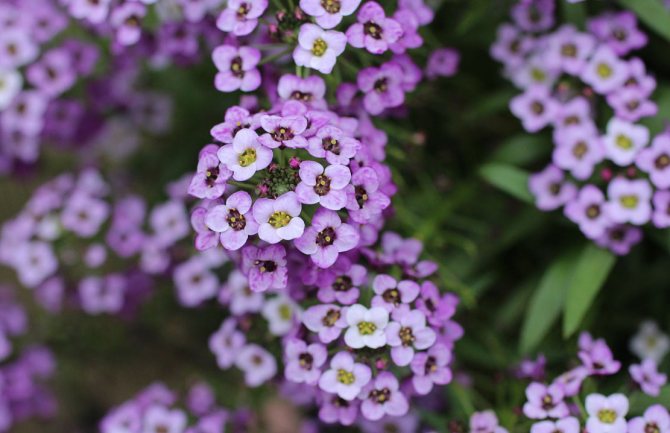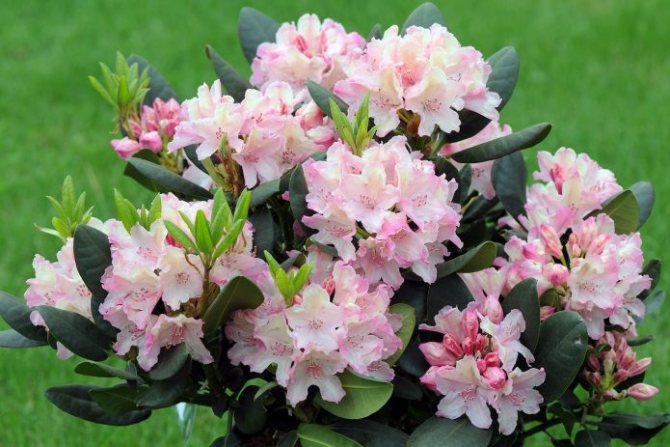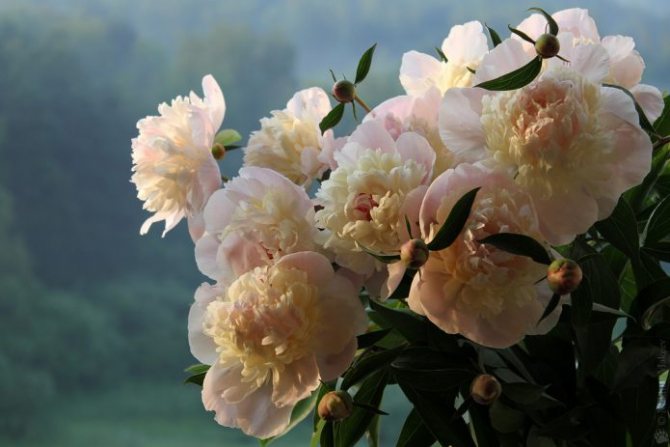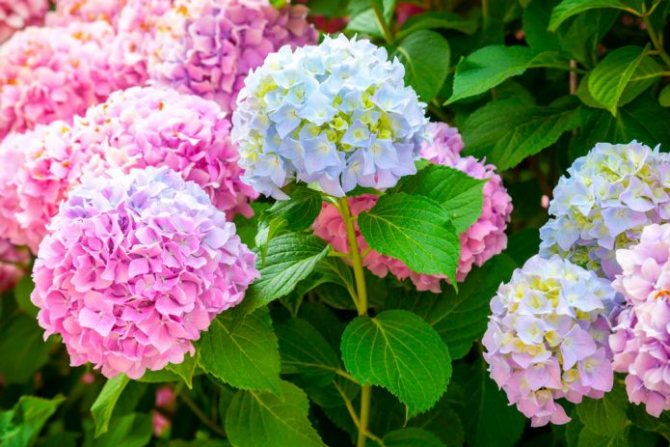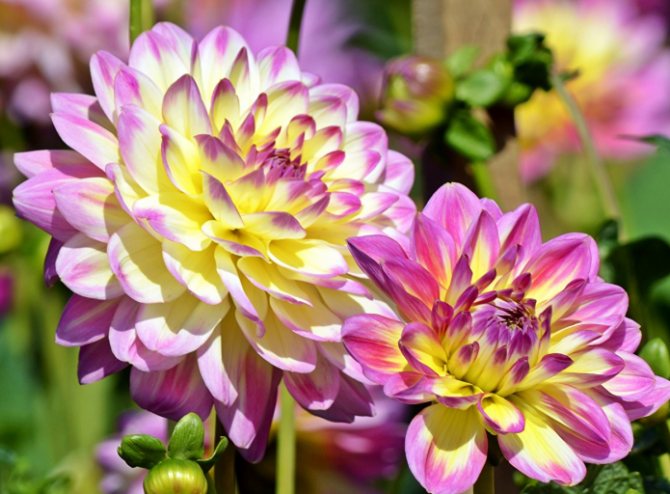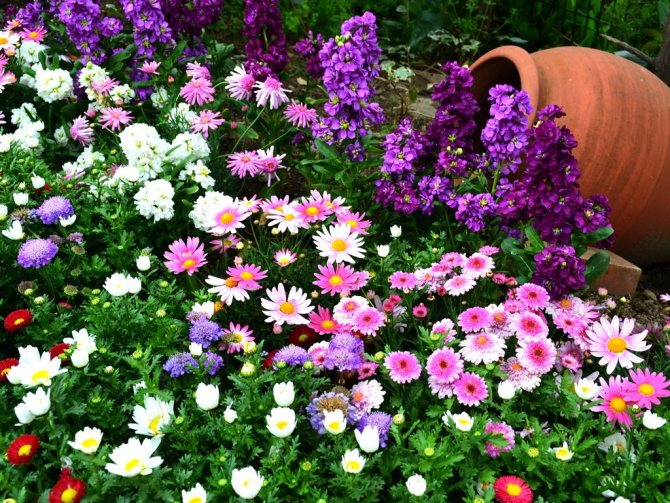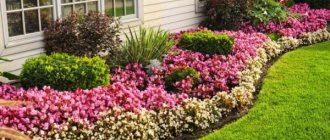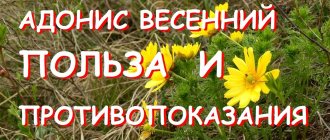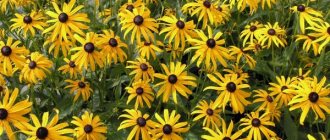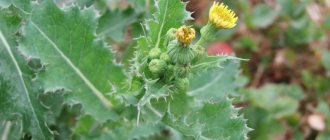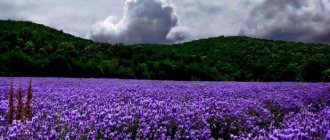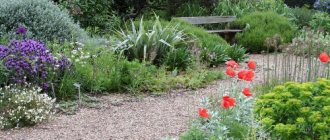Low-growing perennials are a versatile "tool" of an experienced gardener. These flowers complement landscape compositions, they are successfully combined with garden and vegetable garden crops, they are used as borders, ridges and other dividing structures.
Almost all low-growing perennials bloom throughout the summer. Flowerbeds with them look well-groomed and remain spectacular even without regular maintenance, annual transplantation.
Low-growing flowers are very unpretentious, but even they need to be able to choose the right one. You can learn about the varieties of perennials and their characteristics from this article.
Benefits of perennials for the garden
Pros of perennials:
- Difficulties in the selection of seed usually do not arise.
- You can create a beautiful flower garden without wasting time.
- Many different combinations.
- Long flowering period.
- Strong root system.
- Lack of difficulties in leaving.
- Resistance to the negative effects of low temperatures.
- Minimum financial costs for the improvement of the site. There is no need to purchase planting material before the start of each season.
- Additional income. It can be obtained from the sale of seed.
- They can stay in one place for several years. There is no need to re-select the planting site and care for the seedlings at the beginning of each season. The time saved can be spent on caring for other crops.
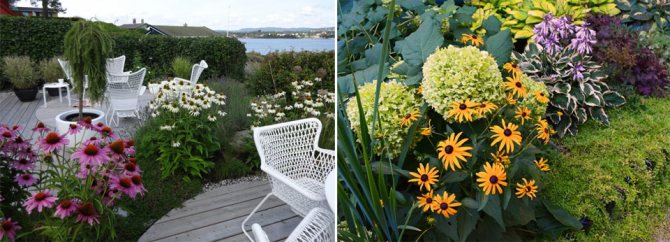
There are many factors to consider when choosing your garden crops. Among them are climatic conditions, soil, shade, personal preference.
Choosing perennial flowers for a summer residence
The assortment of plants used for the improvement of the personal plot is diverse and characterized by its own characteristics. Thanks to this, every gardener has the opportunity to create a unique landscape design.


Flowers included in the list of the most popular perennials, in most cases, do not require complex maintenance. They need fertile, drained soil and watering.
Perennials are classified by flowering period and height. Taking into account the latter indicator, it is possible to distinguish tall, medium-sized and creeping plants. Size plays a decisive role in choosing a landing site.
In addition, it is important to pay attention to the following nuances:
- The need for sunlight, shade and moisture.
- Distance between plants.
- The presence of support (for tall perennials).
Low-growing plants are used for edging flower beds, filling voids and decorating borders. Tall ones are placed in the background, and medium-sized ones are planted in the middle.
The basics of landscape design
When creating flower beds on your own, you need to understand how to harmoniously place and plant plants so that the flower bed blooms all summer. There are several basic principles and rules of landscape design that will help with this:
- Before you go for the purchase of plants, it is important to find a place for them in the flower bed and study the features of the site: soil type, acidity, illumination. Depending on these parameters, the type of crops is selected.
- It is better for novice gardeners to plant unpretentious crops for the first time, and also limit themselves to 3-4 species.
- It is best to choose plants for planting in the same flower garden that require similar care and growing conditions.
- To avoid the disorderly arrangement and occurrence of different types of crops, it is better to arrange group plantings of the same type of plants.
- Great attention should be paid to the color scheme. A bright motley flower bed will rather talk not about beauty, but about bad taste. It is best to pair some bright colors with white.
- In order for the flowerbed to bloom all summer, you should choose plants with different flowering periods for planting.
- When composing a composition of low-growing perennial flowers for a flower bed that blooms all summer, it is important to provide a viewing angle. If the flower garden is visible from all sides, then the taller plants are placed in the center, around the middle, then the lowest.
- In order to achieve the desired result when creating a flower bed, it is important to draw up a plan in advance. A landscape designer can help with this.
Perennial primroses
These plants delight with their brightness, tenderness and grace at a time when there is snow. Most of them prefer moist soil and shade.
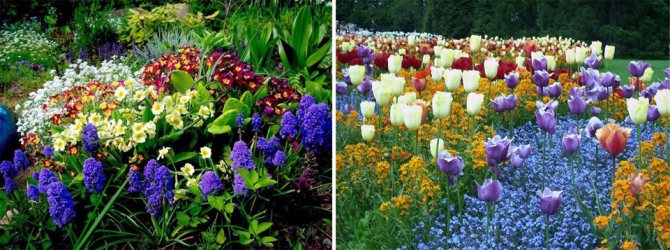

To achieve the desired effect, spring primroses are placed in mixed beds, between tall shrubs and on an alpine slide. The list of the most demanded includes:
Anemone
Corollas bloom in late April and early May. This period lasts for 2-3 weeks. Luscious foliage is combined with vibrant flowers.
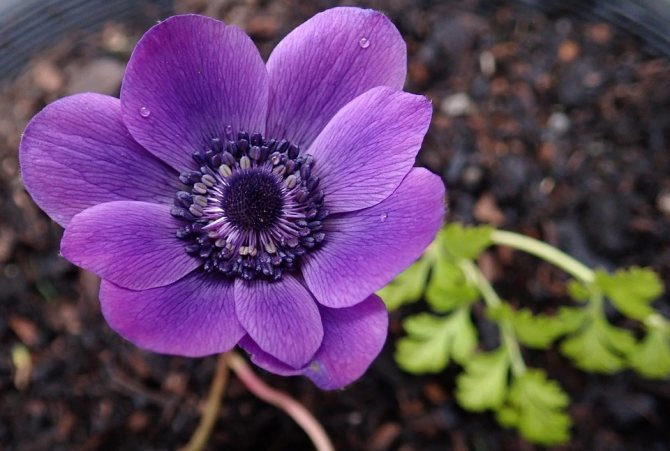

The latter can be white, yellow, blue, pink, red and purple. Withered anemones have an unsightly appearance. Next to them, it is recommended to plant plants that bloom in summer and autumn. Reproduction takes place with the help of seeds and dividing the bush. The separated parts quickly take root. The diameter of the flowers is from 65 to 80 mm.
Snowdrop or Galanthus
An unpretentious plant that needs shade, moisture and coolness. The duration of flowering of early bulbous plants depends on weather conditions.
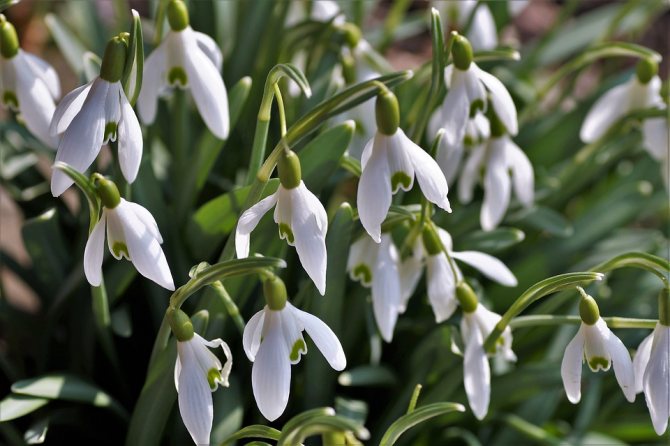

The snowdrop has a pleasant aroma, neat white drooping bell-shaped corollas, and the ability to grow quickly.
Tulip
In the spring, flowers bloom, belonging to simple and double early varieties. In a flower garden, tulips are often combined with evergreen perennials. They usually do not exceed 40 cm.
Also read about when to plant tulips.


Daffodils
Height from 5 to 50 cm. Corollas are yellow and white. The daffodil can be planted in a shaded or sunny area. Reproduction is carried out using bulbs.
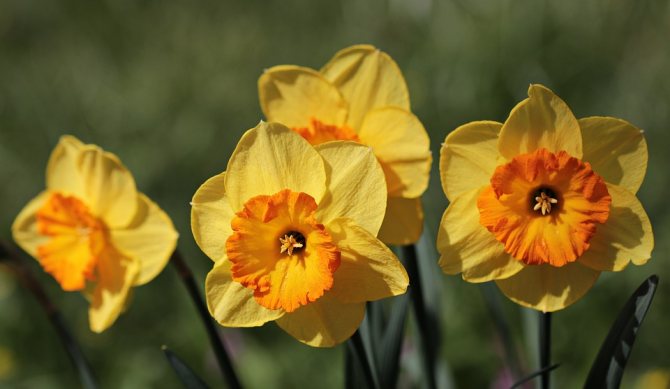

Crocus
They bloom at the same time as snowdrops. The buds are creamy, yellow, blue and purple. Flowering begins in March. Read about planting crocuses in a separate article.


Grouse
Flowers of drooping form. Grouse bulbs are not protected from external damage. To prevent their appearance, it is recommended to use a solution of potassium permanganate.
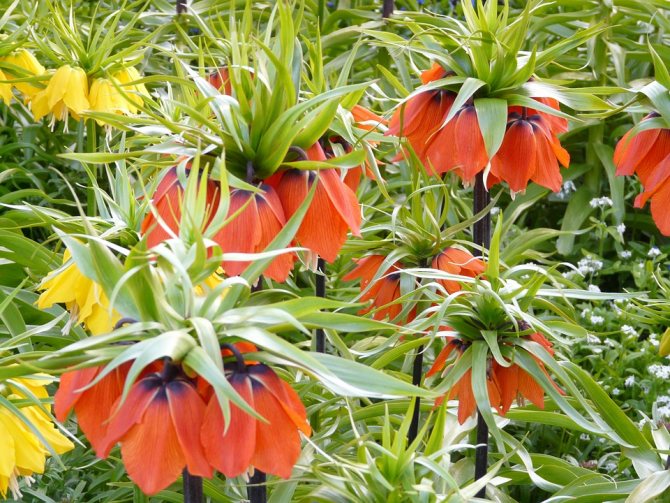

Forget-me-not
Loves moist soil and shaded areas. Delicate blue inflorescences, bright leaf blades in the form of a heart.
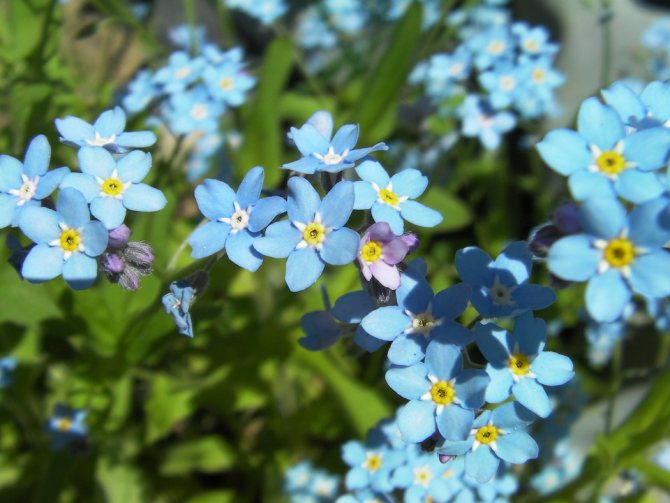

Lungwort
A short perennial that prefers partial shade. Dark green leaves are decorated with specks and dots. Blue and pink corollas are located on the same stem.


Dicenter
Heart-shaped light purple, white and pinkish flowers, arched stem. The height of the bush reaches 100 cm. The corolla of the dicenter bloom in May. Propagated by dividing the rhizome.


Muscari
Delicate blue inflorescences outwardly resemble a bunch of grapes. The plant can be planted anywhere in the garden. Among the characteristic features are light-requiring and winter hardiness. Blooms in April-May. Coloring can be one-tone or two-tone. Muscari-chameleons are distinguished into a special category.
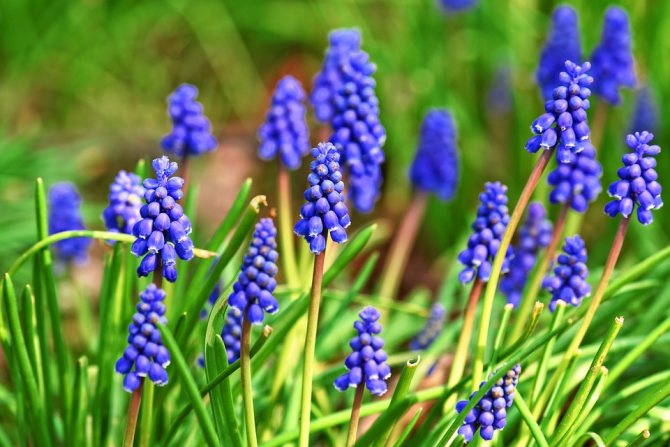

Primroses
They prefer shade and loose fertilized soil. Primrose colors can be varied.Corollas are cushion, capitate, umbellate, bell-shaped, tier-shaped.
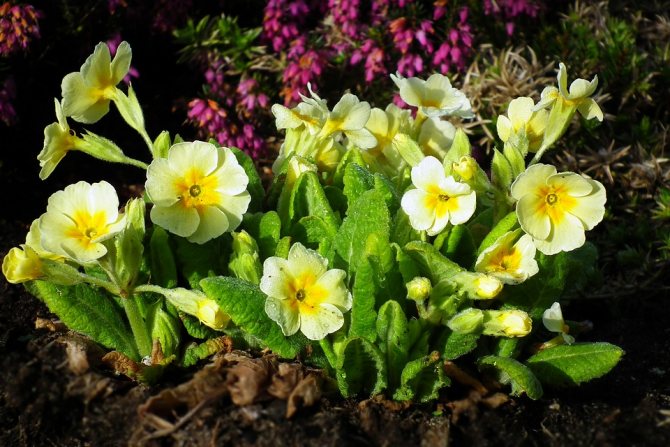

Hyacinths
Blue buds appear at the end of April. The plant needs cool, fertile and drainage soil. With excessive moisture, hyacinth bulbs die. Planting is carried out in early autumn.


Proleska or scilla
Short and hardy, they create a bluish carpet effect. Propagated by bulbs, self-seeding is possible. Woodpeckers quickly adapt to changing climatic conditions. The complex of fertilizers includes nitrogen, phosphorus and potassium.


Lily of the valley
Delicate and graceful flowers resembling bells. The plant loves moist soil and partial shade, is afraid of drafts. Lily of the valley transplant will have to be abandoned.
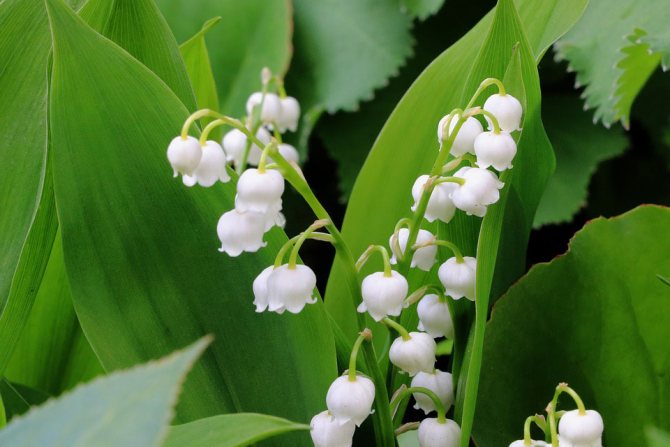

Periwinkle
Creeping plant, flowering period begins in April. Corollas come in different shades of blue. Unpretentious to the ground, needs partial shade. Periwinkle grows rather quickly.
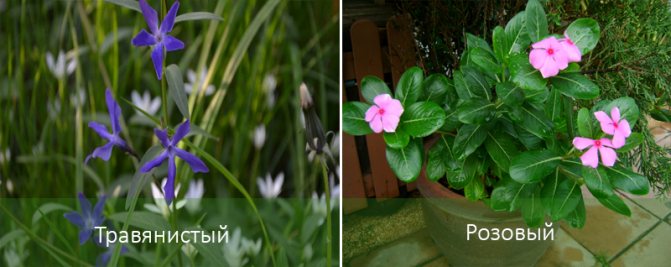

Types of flower beds from low-growing plants
A flower bed or flower garden is the general name of the site where compositions from ornamental plants are grown. Floral ensembles are created from perennial, biennial and annual flowers. Gardeners use shrubs and even trees. Flower beds differ in size, shape, content, etc.


Flower garden design option
List of basic options:
- Classic - have a clear geometric shape: square, circle, rectangle, triangle, etc. They use both one type of plant and several. Classic flower beds differ in color, planting density and combination of types of flowers.
- Curbs - a strip of densely planted plants. Such flowerbeds are created for framing paths, lawns, decorating fences, hiding communications, etc. Border flower beds are made up to 1 m wide, from at least 3 different plants.
- Rabatki - compositions of one or more plant species in the form of a rectangle or curved arc. The length is different, but the width is strictly up to 2 m. Rabatkas fill the space along the paths, houses, fences, create elements of the walking area.
- Mixborders - landscape flower beds, which differ from rabatki, borders by the absence of a certain length and width. Such compositions play the role of a flowering framing of a lawn, recreation area, reservoir, etc. Flowers are planted in groups with accents (seasonal, visual).
- Modular flower beds - flower arrangements for decorating a large area. In fact, it is a mosaic consisting of separate repeating sections filled with different plants.
- Single flower beds - to revitalize boring areas, decorate the landscape. Islet flower beds, as they are also called, are carpet and lush, of different sizes, shapes, colors. Often, single flower beds are made seasonal - disappearing from the sites after the end of flowering plants.
- Parterres - flower beds made in the form of complex patterns, ornaments. Created to decorate gardens with a large area of city parks.
- Landscape flower beds imitate natural plantings. Their varieties are rockeries, alpine slides, front gardens.
Perennials blooming in spring and summer
This period is distinguished by a variety of colors. Bright inflorescences look good against a backdrop of lush greenery.
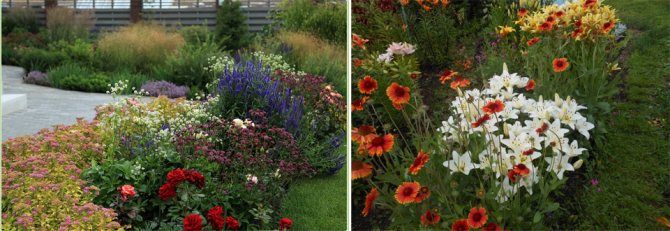

The following plants are used to create flower beds, mixborders and alpine slides.
Gelenium
High decorative and winter hardiness. Reaches 1.6 m. Large red and yellow flowers bloom in summer. Gelenium has a weak rhizome, highly branched shoots. Reproduction is carried out by means of young shoots and seeds.
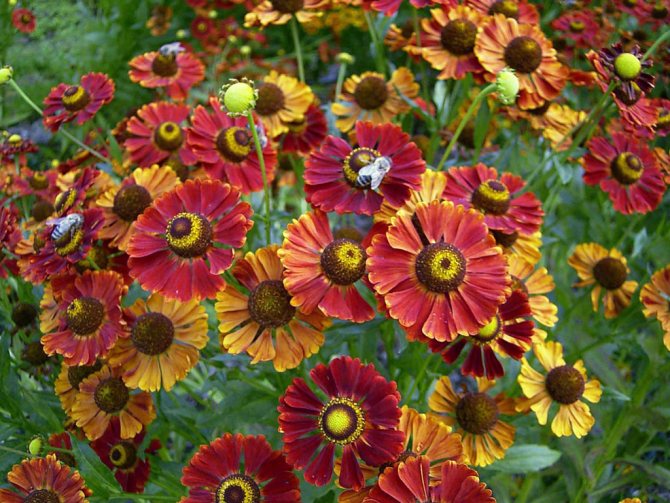

Monarda
Bushes are tall, stems are straight and strong. The diameter of the small lilac-pink corollas of the monarda is 7 cm. It blooms in July.


Ayuga or tenacious
Height does not exceed 25 cm. The plant is highly frost-resistant and shade-loving. The tenacious prefers sandy soils. Small blue corollas remain open for 2 weeks.
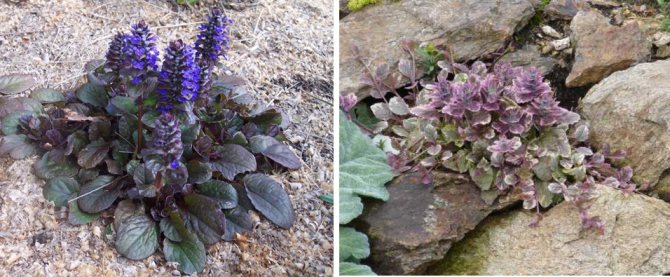

Thrift
Peduncles reach 35 cm. The capitate inflorescences consist of pinkish, dark red, lilac or white corollas. Armeria loves loose light soil and sun.
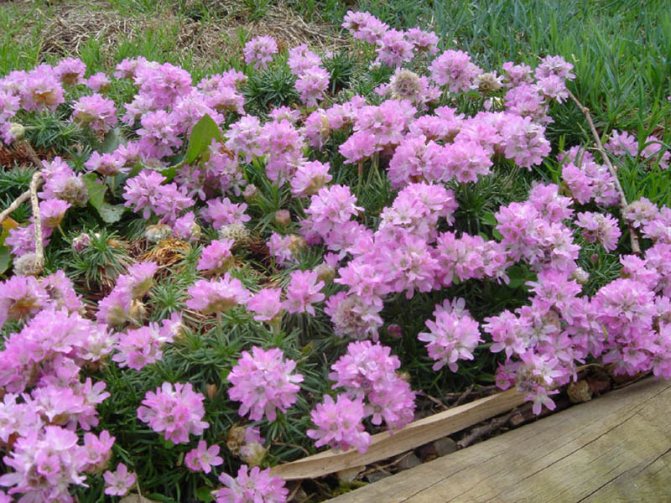

Buzulnik
Coffee, yellow and orange whisks are arranged in intricate umbrellas. The diameter of the inflorescences is no more than 10 cm. The bush is 1.5 m. The additional characteristics of the buzulnik include requirements for soils, frost resistance and moisture content.
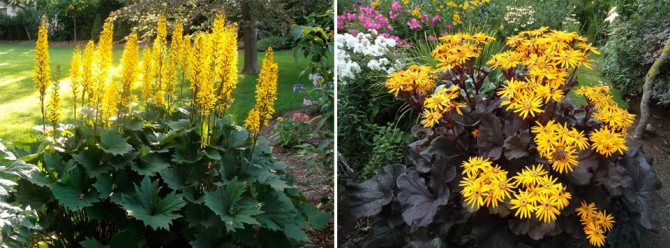

Hosta
Decorative leaves are green, yellow and blue. Frost-resistant, unpretentious plant. The height of the bush is 90 cm. Hosta can grow in one place for 15 to 20 years. Needs sun and fertile loamy soil.
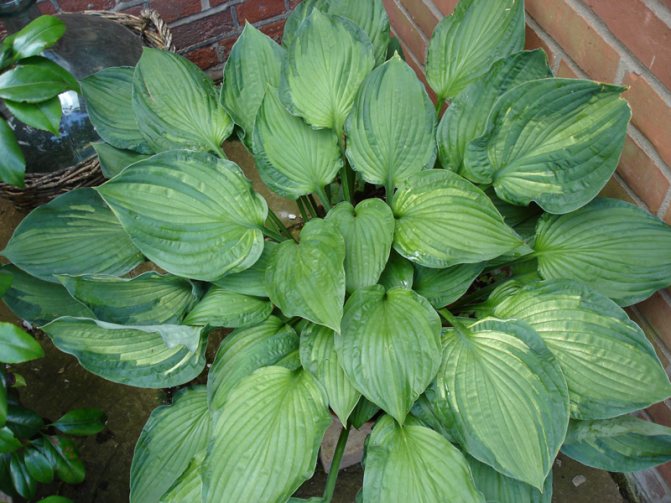

Perennials blooming in summer and autumn
The following crops can be used to decorate the garden during this time period.
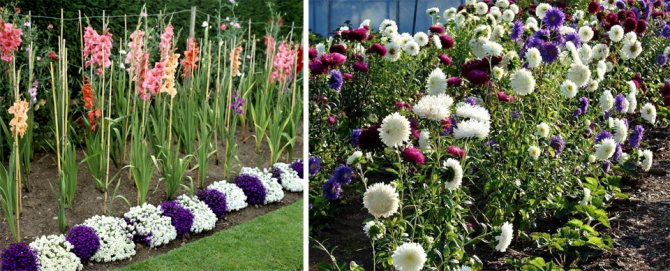

Asters
Lanceolate leaves of medium size. Baskets can be of different colors. These flowers are used to create bouquets and hedges. Representatives of different varieties differ in height and flowering period (spring, summer, autumn). Asters are characterized by unpretentiousness, frost resistance and light-requiring.


Dahlias
They have a long growing season. The stem is branched and hollow. Baskets vary in shape, color and size. Not hardy. Dahlias are used to create intermittent and single plantings.
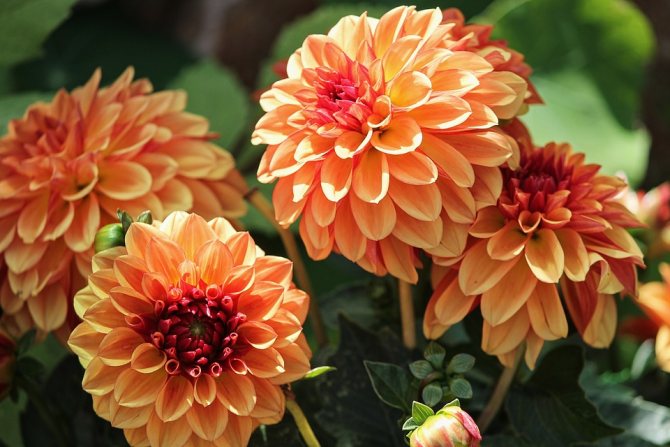

Gladioli
A plant with a straight stem (up to 1.5 m) and flowers collected in ears of various colors. Gladiolus loves sunny places. Requires support. The bulbs are dug up before winter and planted again in the spring.
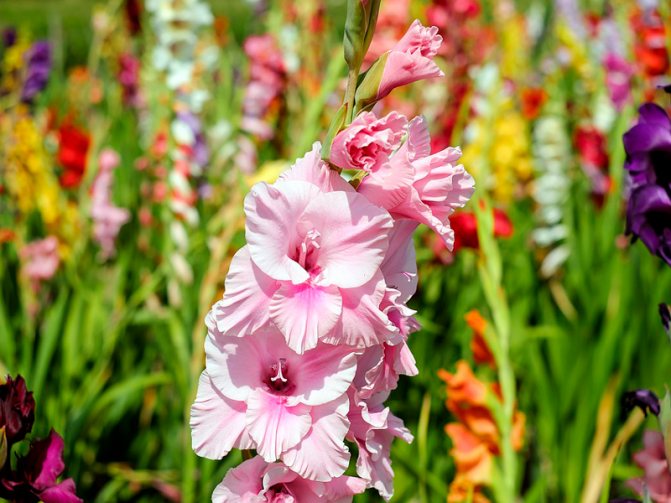

Phlox
They are planted in ridges and massifs. They are highly decorative. There are many phlox hybrids that bloom from May to September. Plants tolerate frosts without any problems. Bright inflorescences, enchanting aroma, varied range.
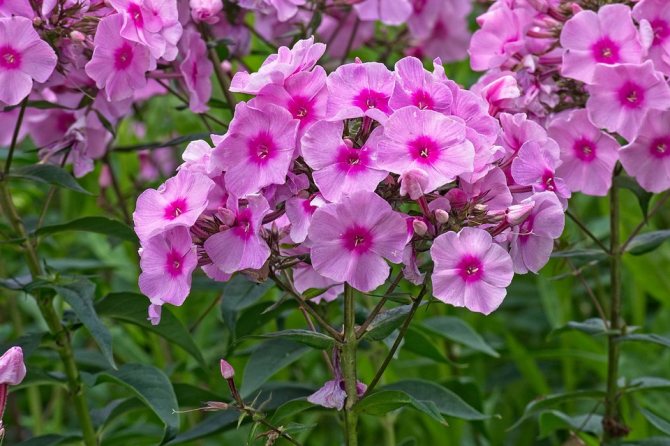

Goldenrod
A representative of the Aster family. Rhizome of horizontal type, shoots are decorated with dense foliage.
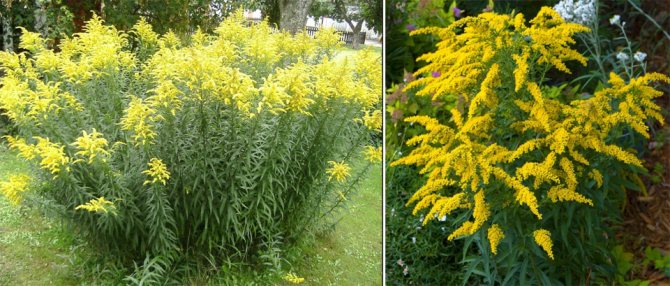

The inflorescences are large and pyramidal in shape. Height can reach 2 m. A new plant is obtained by dividing the rhizome.
Coreopsis
Flowering begins in July. Outwardly, the plant looks like a chamomile. Coreopsis has green juicy stems that end in bright yellow terry "suns".
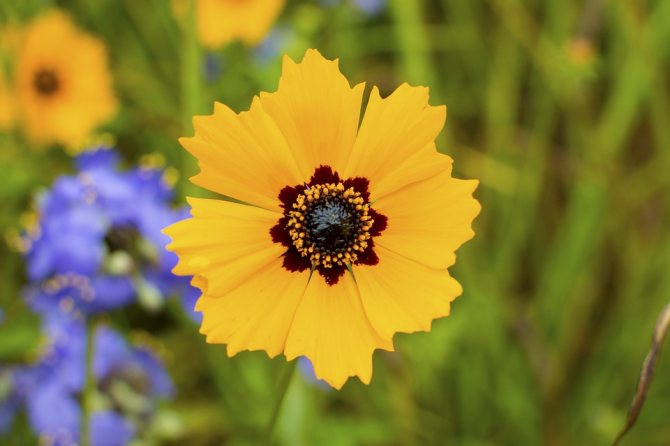

Tsimicifuga
Graceful inflorescence, collected from small white corollas. High branching stem, openwork leaves.
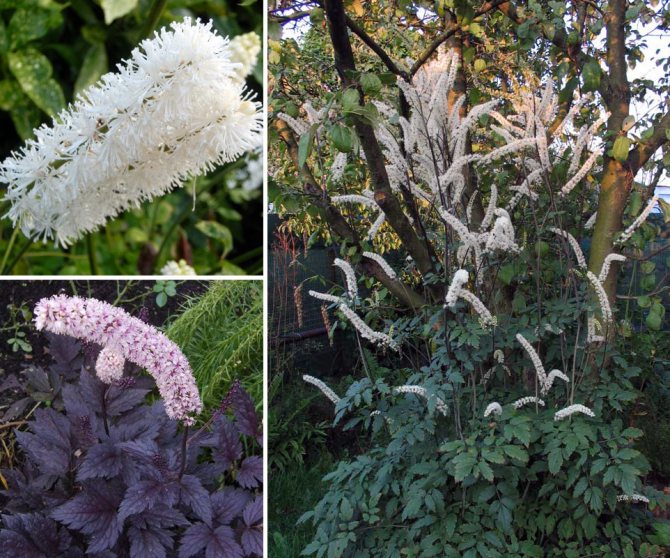

Sedum or sedum
A creeping plant characterized by brittle leaf blades of a bluish-green hue and succulent stems. Sedum is planted on terraces and alpine slides, in small rabatkas.
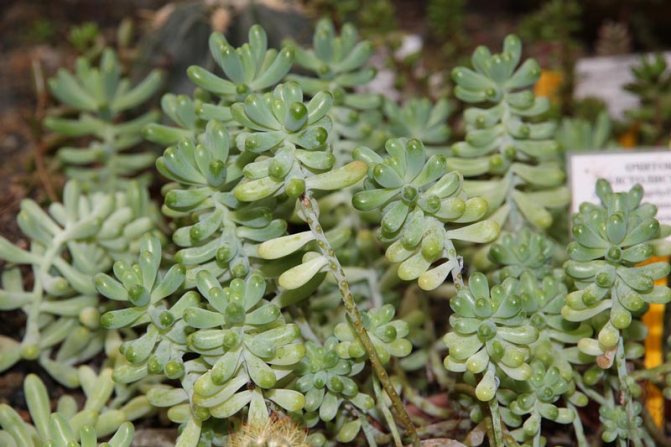

Chrysanthemum
Belongs to the Aster family. Gardeners know about 200 varieties. The culture is classified by size, flowering period, shape and height. Chrysanthemums bloom from June to December. The color can be purple, white, red and yellow. A combination of them is possible.


Chamomile or daisy
Strong rhizome. Reproduction takes place through seeds and dividing the bushes. Nivyanik is characterized by winter hardiness and light-requiring.
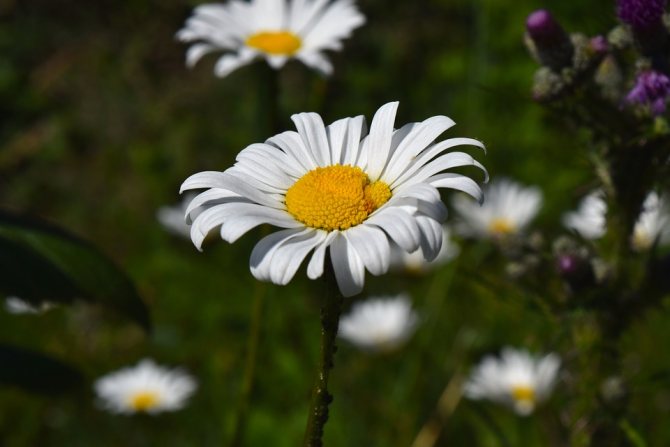

Daisies


Garden daisy is a suitable option for a limited time grower
Delicate daisies will decorate a summer flower garden and give the mood of weightlessness and peace. In addition, their flowering lasts quite a long time, until the first cold weather. The color scheme is varied, so it will not be difficult to choose the right type of flower. Like many other low-growing flowers, daisies are a perennial plant, but in our latitudes they are most often cultivated as an annual.
The annual daisy is sown from January to February in specially created greenhouse conditions. And the flower is planted in open ground when the soil temperature warms up to +20 degrees. In this case, already at the beginning of June, you can expect the appearance of the first flowers. Perennials are planted by dividing the bushes.This is usually done at the end of the summer season (July to August). It is important that faded flowers and damaged leaves are cut from the planted seedlings.
By the way, daisies can grow in a flower bed for more than one year. But experts believe that such flowers lose their decorative effect.
It is recommended to use such varieties as annuals:
- Galaxy.
- Speedstar.
- Bellissima.
In general, daisies require a normal move and are not so whimsical: it is necessary to regulate the moisture content of the earth and ensure regular loosening. Lack of moisture can have a negative effect on the size of the flowers, making them smaller. It is also a good idea to fertilize the flowers occasionally.
Interesting fact: this fragile flower has medicinal properties, therefore it is grown for medical and cosmetic purposes.
What colors are combined
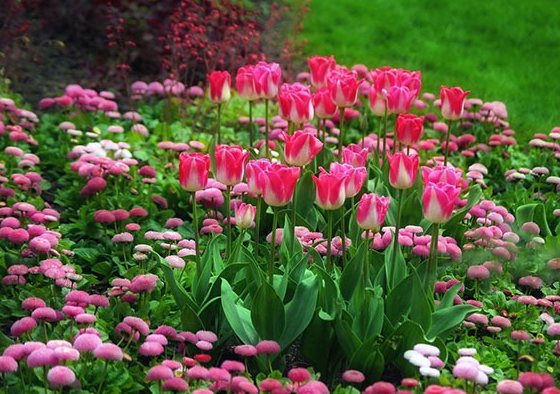

One of the win-win solutions - daisies and tulips in the same color scheme
A win-win solution - bright greenery, lawn, neighborhood with cereals. Daisies look good next to primroses such as crocuses, daffodils and tulips.
Application of perennial flowers
Perennials differ from each other in the type of inflorescences, color, planting algorithm, leaf shape. Plants belonging to this group are used for landscape design of compositions of varying degrees of complexity. This is due to their appearance and unpretentiousness.
By giving preference to perennial flowers, the gardener frees himself from the difficulties caused by the need to regularly replant and sow the backyard. There is no need for winter shelter either. Flowerbeds, alpine slides, lawns, paths, hedges - there are many ways to use perennial crops.
Tall garden perennials
Plants from this category are used to frame large objects in the garden.
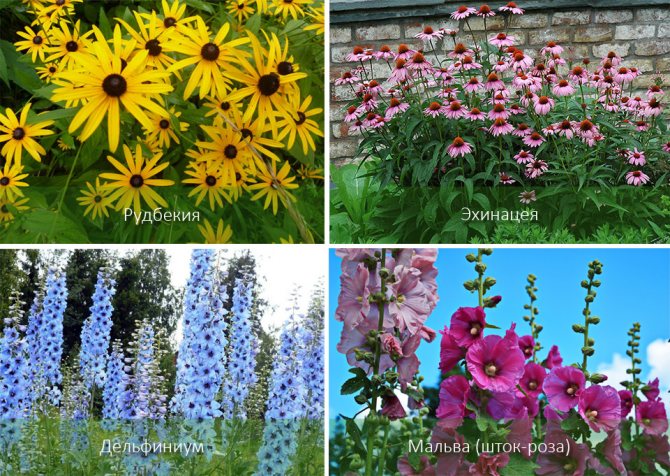

The latter include benches, arches, gazebos and pergolas. Among the perennials that are suitable for this:
- Astilba - its bright paniculate inflorescences adorn the site throughout the summer months.
- Delphinium - during the flowering period, purple, sky blue, white, blue and pink corollas open on the plant.
- Rudbeckia - bright yellow, terracotta and reddish inflorescences are distinguished by their density. This plant needs regular watering and sunlight. It blooms from the first summer month until frost.
- Echinacea - has powerful healing properties, does not have a toxic effect. Tall stems end with beautiful large flowers. Differs in drought resistance and light-requiring.
- Stock-rose - characterized by a long flowering period, winter hardiness and shade tolerance.
- Lupine - breeders have bred many varieties. Corollas are two-color and one-color.
- Lobelia - differs in lanceolate leaf blades and scarlet inflorescences.
- Loosestrife - flowering continues throughout the summer. In autumn, the green leaves take on a reddish tint. Violet-red corollas are small in size.
The list can be supplemented with evening primrose, hydrangea, liatrix, levkoy.
Perennials of medium size
This catalog contains plants that vary in height from 30 to 80 cm. They are often planted in separate groups. In long-tiered beds, the second row belongs to medium-sized perennials. The most popular are: sage, daylily, cornflower, geranium, godetia, cuff, gerbera.
The list can be supplemented with astrania, erigeron, yarrow, nivyanik (garden chamomile, the link to the main article was above).
Stunted flowers
When creating a unique landscape design, stunted perennials are also not neglected. These plants are planted in rockeries and alpine hills. They are decorated with flower streams, borders and carpet beds.
Each species has varieties adapted for planting in home gardens and parks. Inflorescences are distinguished by a variety of colors. Their shades can be soft and rich. The former include lavender, purple, pale pink and white. The second group includes plants that complement the light background with bright strokes.
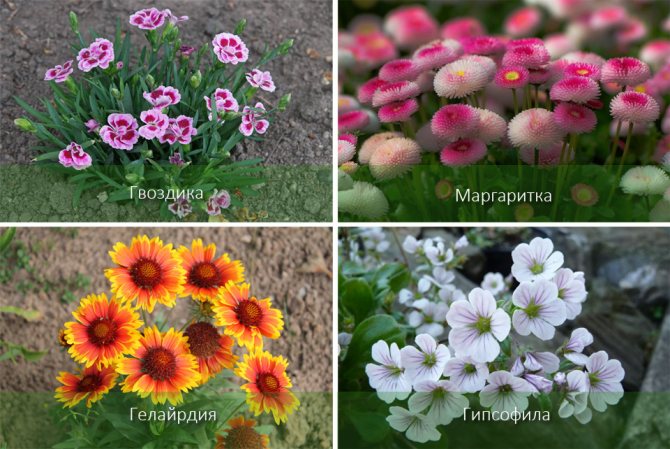

English roses are a kind of classic. The flowering period is June-August. Contrary to popular belief, these flowers are unpretentious and long-blooming. Therefore, they can be seen in any garden.
Among low-growing plants, gypsophila, daisies, carnations, gentian, Gaillardia are especially popular (there are high varieties). Perennial flowers can help you create a garden, saving you time and money. Planting materials must be purchased at a specialized store.
Petunia


The abundance of varieties and shades of petunias is amazing!
This rather unpretentious and surprisingly delicate flower has gained wide popularity in our area. Petunia is a perennial shrub, but in cool latitudes, like ours, it is cultivated as an annual plant. Novice gardeners will definitely appreciate the ease of planting and care, while sophisticated flower lovers can enjoy experimenting with shades and varieties of petunias. In addition, it is known for its resistance to attacks by pests and diseases.
There are large-flowered and multi-flowered subspecies of petunia. For a flower bed, the second option is better, because it blooms earlier and pleases the eye with its beauty until the first frost. But large-flowered petunia is afraid of strong winds, rains and other natural phenomena.
Experts advise planting seedlings at home, somewhere in early to mid-March. Then, already in May, the plant can be safely transplanted outside. Water the flower directly under the root, otherwise it can be harmed. Watering is carried out once every two days after transplanting, and later the petunia is watered as needed. Do not neglect periodic weeding and cutting off wilted inflorescences - this is the basic care that a flower needs.
What to combine with


Petunia is successfully used not only in garden, but also in park design.
It is noteworthy that this beauty can coexist with practical colors of any kind. Moreover, it goes well with summer plants, transforming a flower garden into a real magic.
- begonia;
- marigold;
- pansies;
- levkoi;
- primroses.


